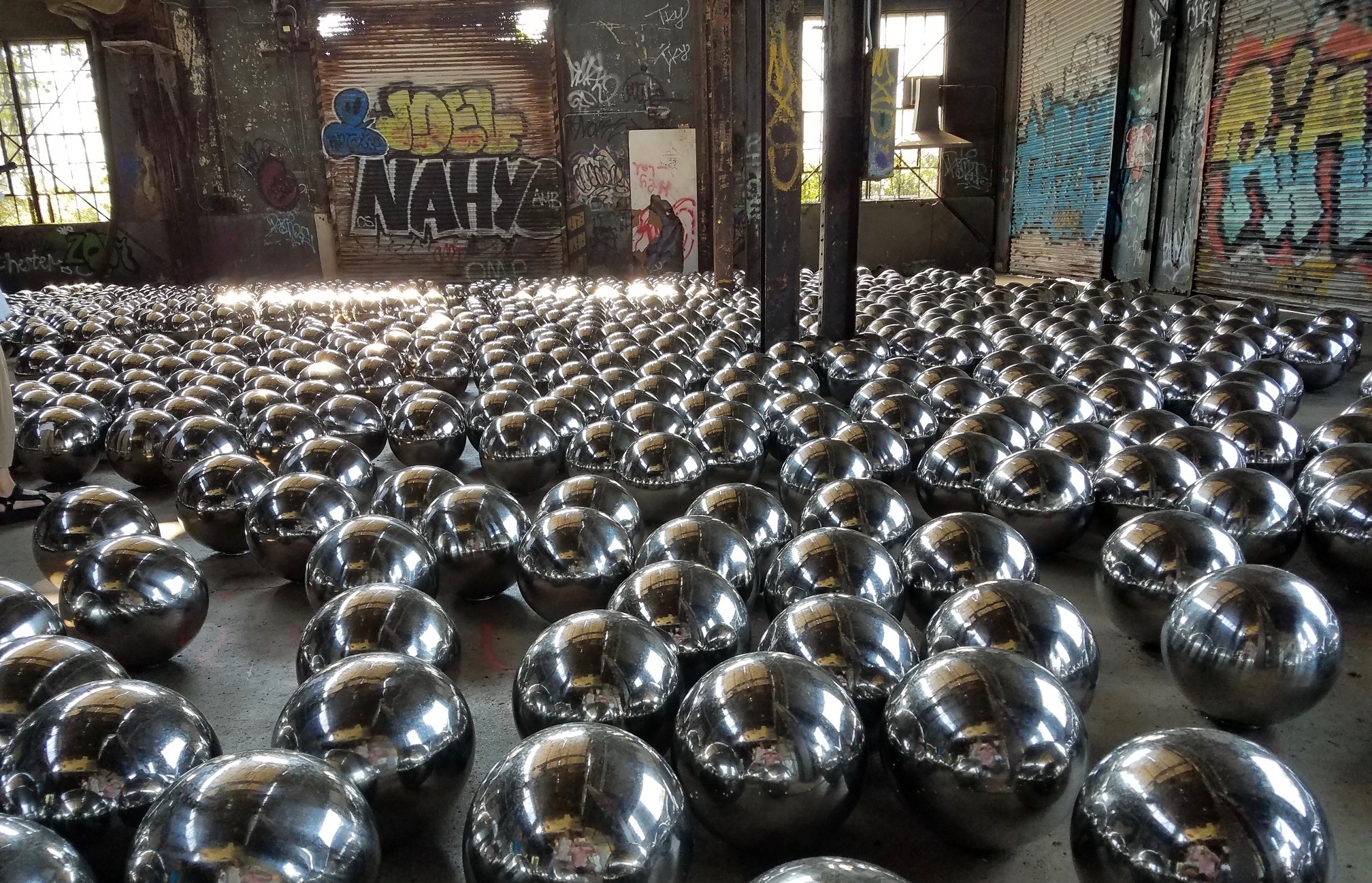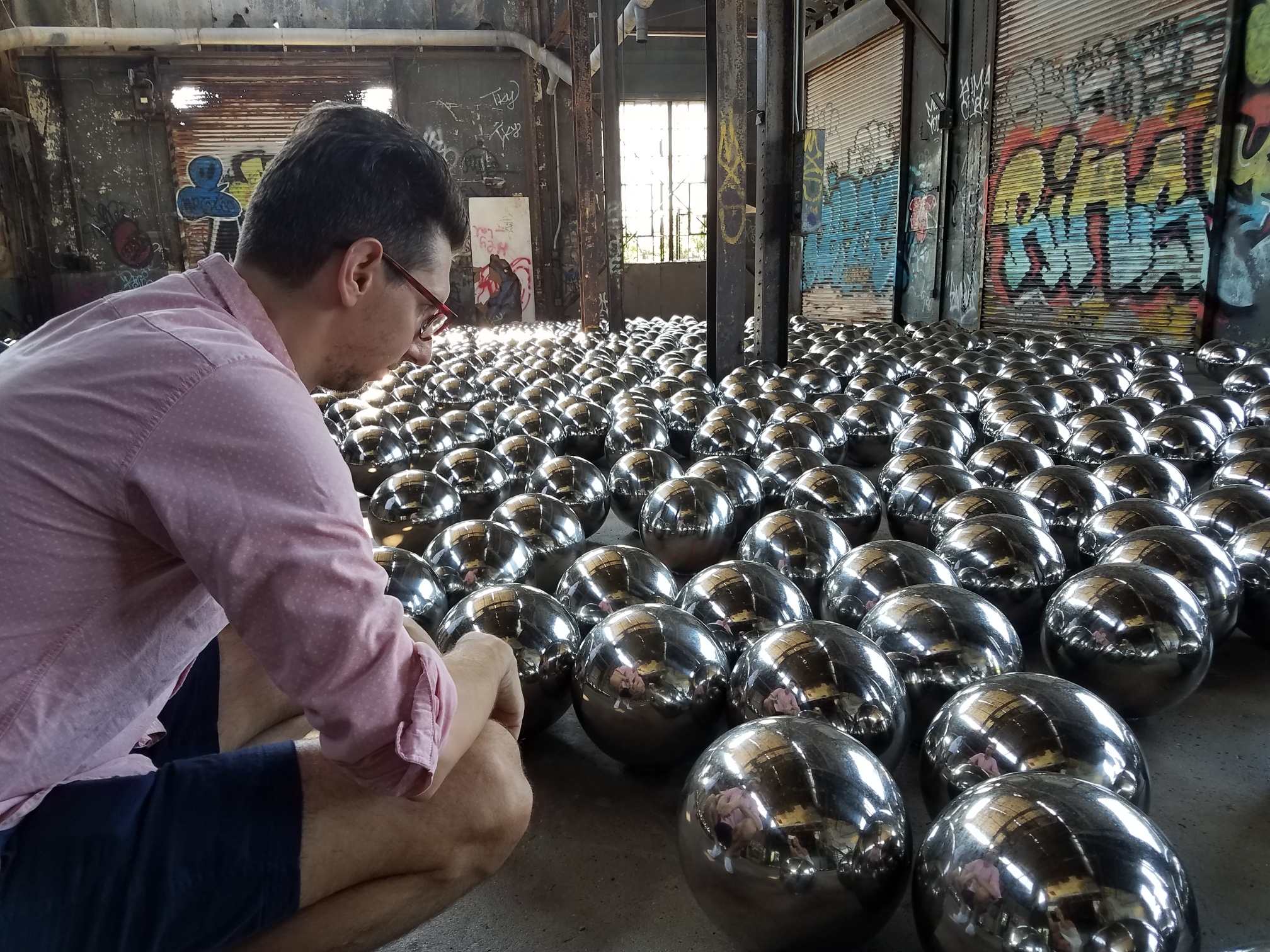The High Line is one of our favorite spots in the city, and we are enjoying the last sunny days of fall by exploring the current contemporary art exhibitions on view. The installation “Secondary Forest” by Italian artist Giulia Cenci stands at 24th street, welcoming visitors to investigate the intersection of human forms and organic elements. The sculptures depict animals, plants, and human appendages created from melted down scrap metal to create a forest that has regenerated after human-caused disturbances, much like the Highline itself. In fact, the artist described how the unique location of the exhibit, which hovers above NYC’s Meatpacking District, where slaughterhouses once stood and chic restaurants and shops now line the streets, influenced her work. As the artist explains, “[T]he High Line is a beautiful work itself; I immediately loved the way nature has been growing and devouring a manmade infrastructure. I started to fantasize about an area where different people, animals, plants, machines, and invisible entities are meeting and crossing.” Cenci’s thought-provoking work will be displayed through March 2025.
“Making Sense” by Ai Weiwei
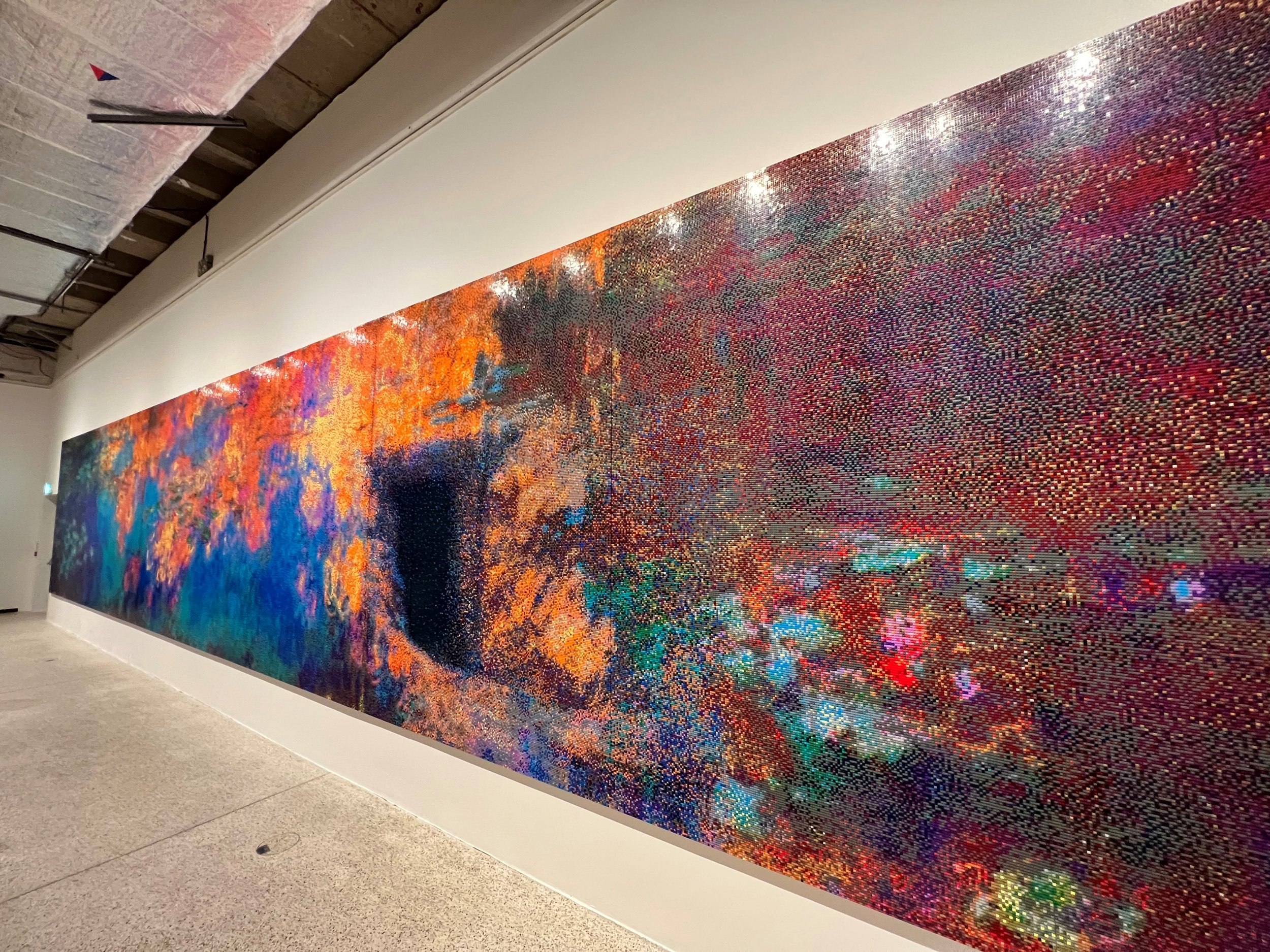
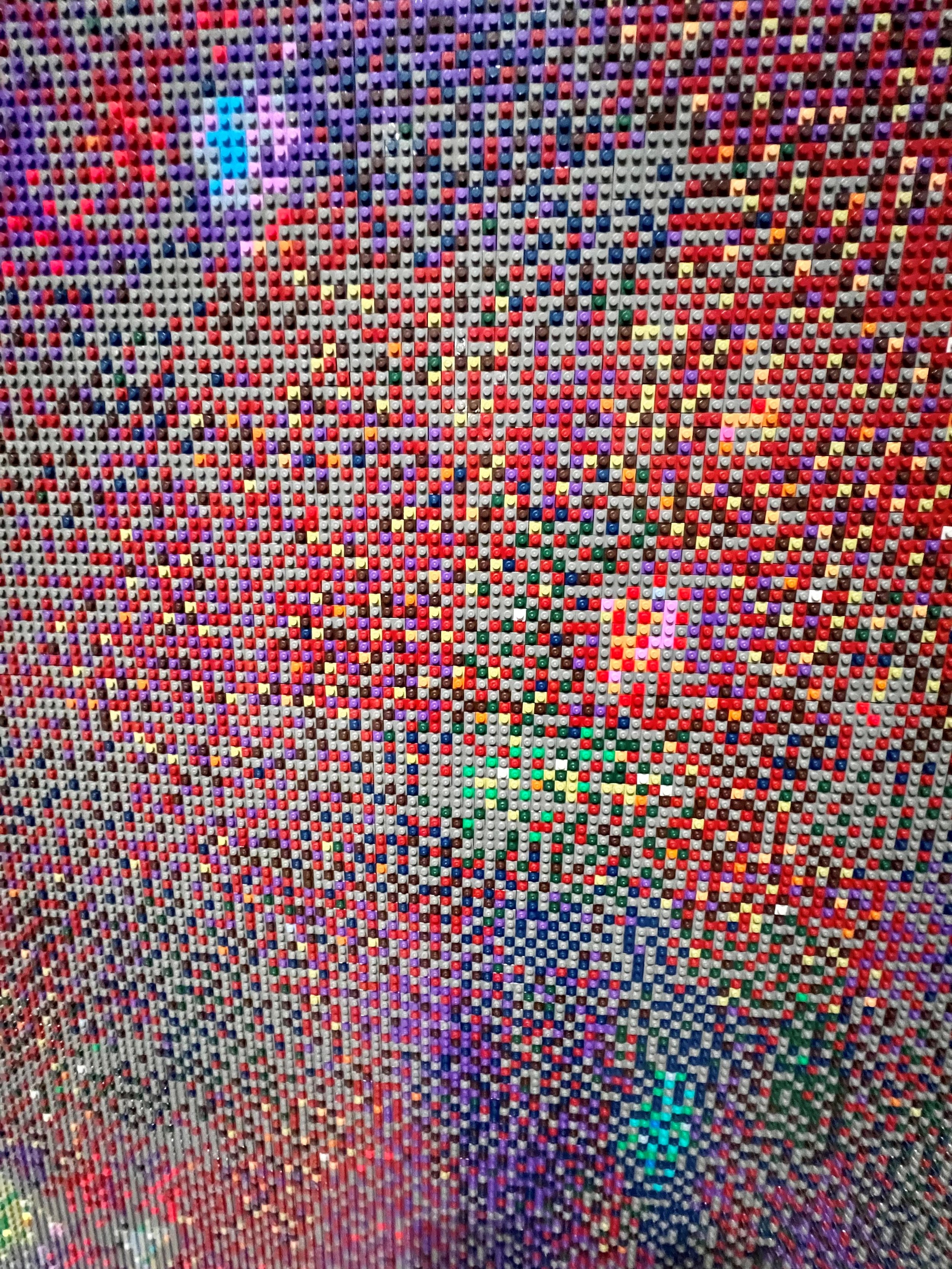

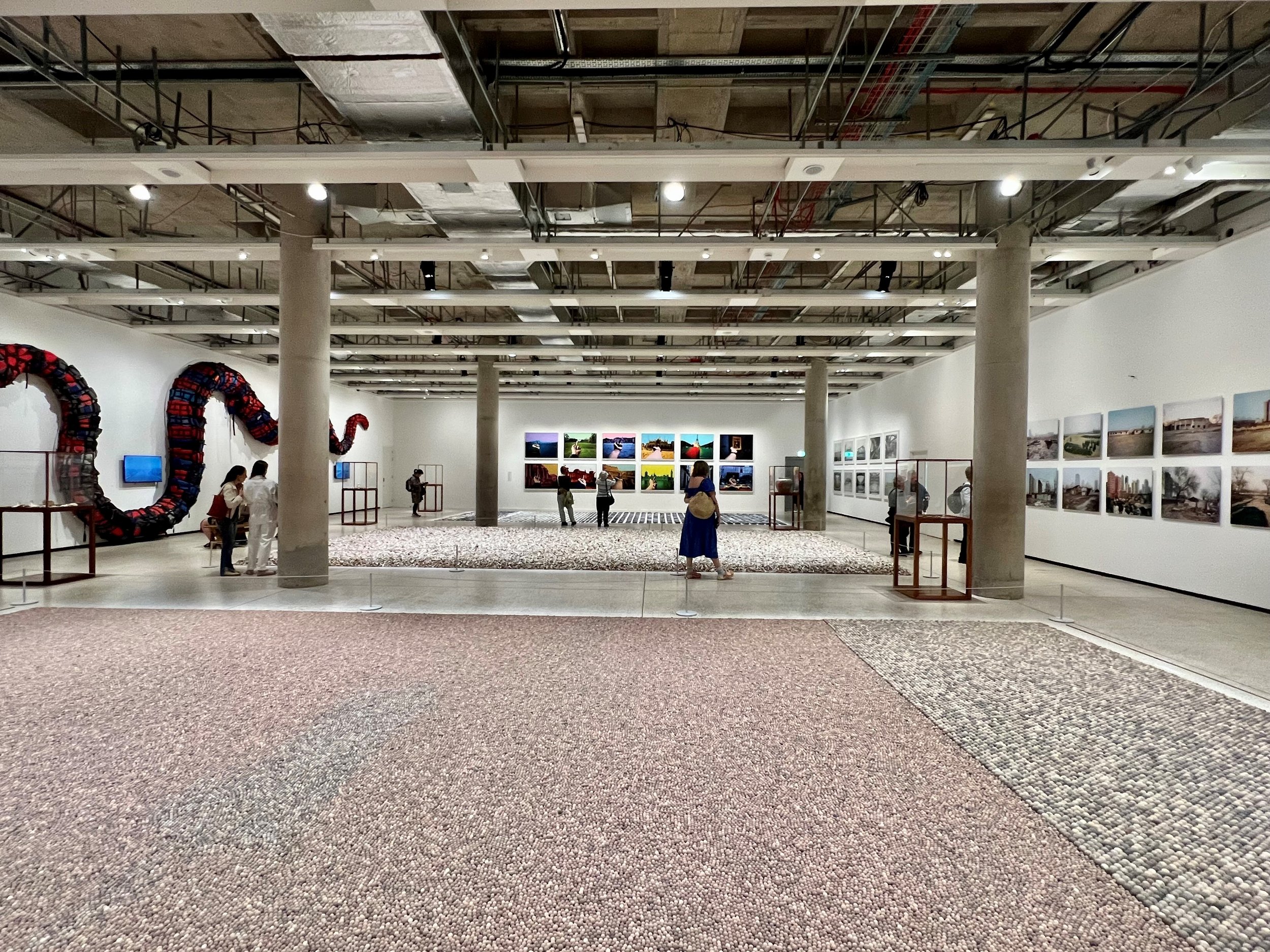
A modern-day Renaissance Man, Ai Weiwei, the renowned artist, activist, filmmaker, architect and collector, has collaborated with The Design Museum in London, to present “Making Sense” as “a commentary on design and what it reveals about our changing values.” The artist’s collection of objects, ranging from Stone Age tools to porcelain dating back to the Song dynasty, to iPhones and Lego bricks to recreate Monet’s Water Lilies, explore our material culture and tensions between construction and destruction as well as industrialism and craftsmanship. “Making Sense” of the dichotomy of consumption and the repression of the individual, Weiwei challenges us to make sense of our own values and the repression of the individual, all the while giving the middle finger to landmarks known as sites of power around the world.
"Geo" by Hou de Sousa

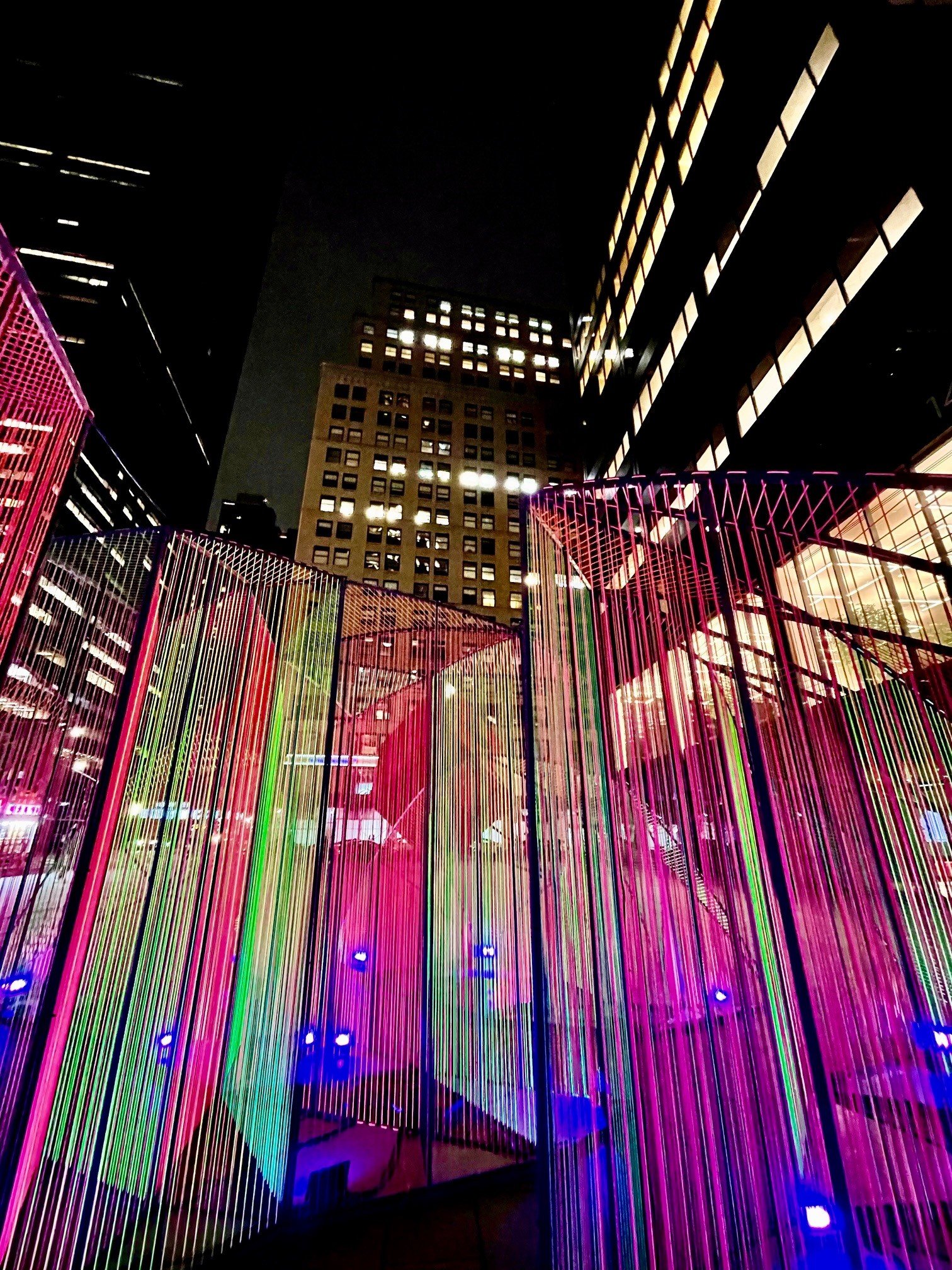
Walking through “Geo”, New York based architecture, art, and design studio Hou de Sousa transports us to a multicolor passage of light. Created from steel frames and over five miles of fluorescent paracord, “Geo” transports us to another time and space away from the steel and concrete that encapsule it in Downtown NYC.
Whitney Biennial 2022: Quiet as it’s Kept
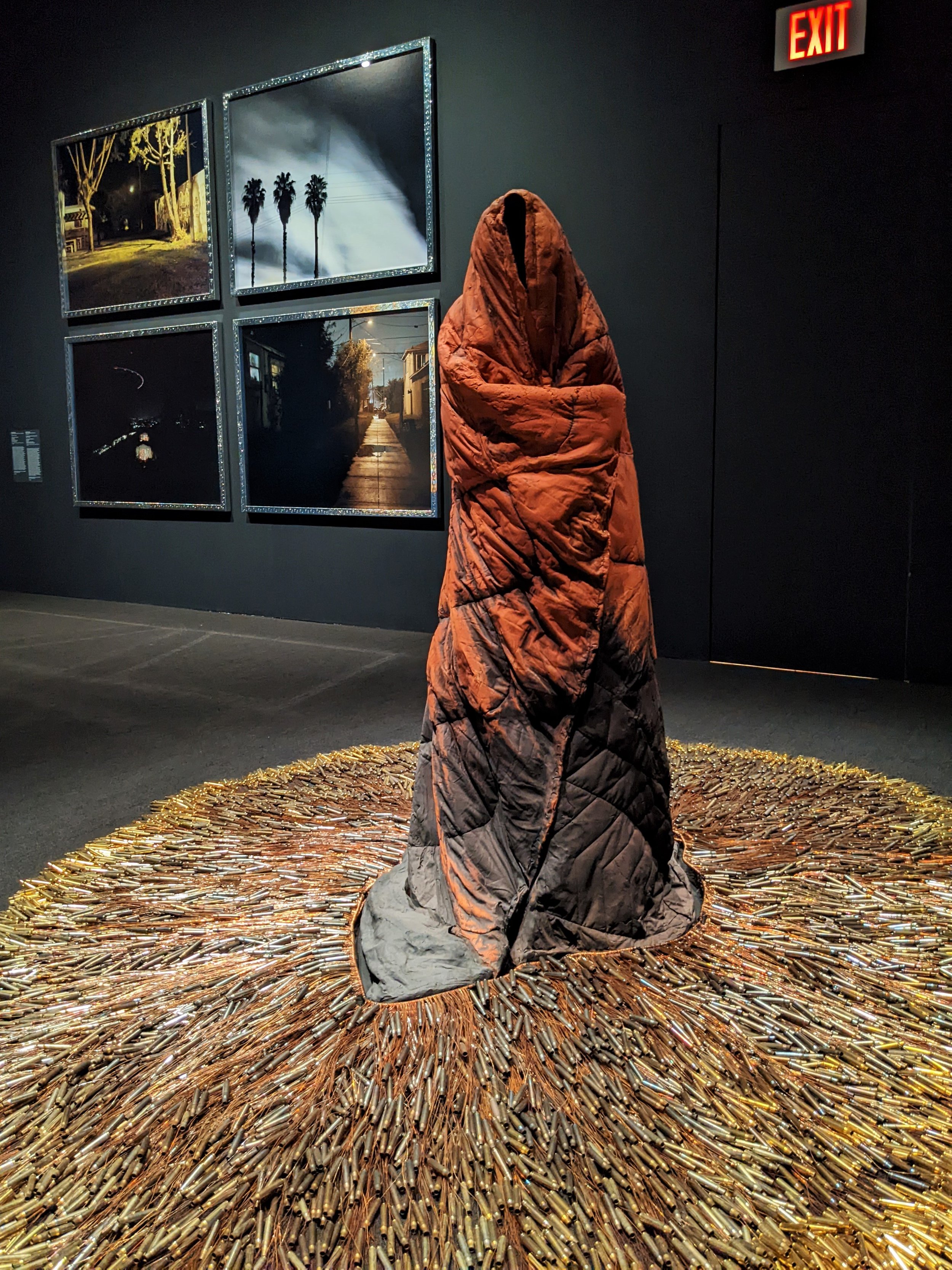

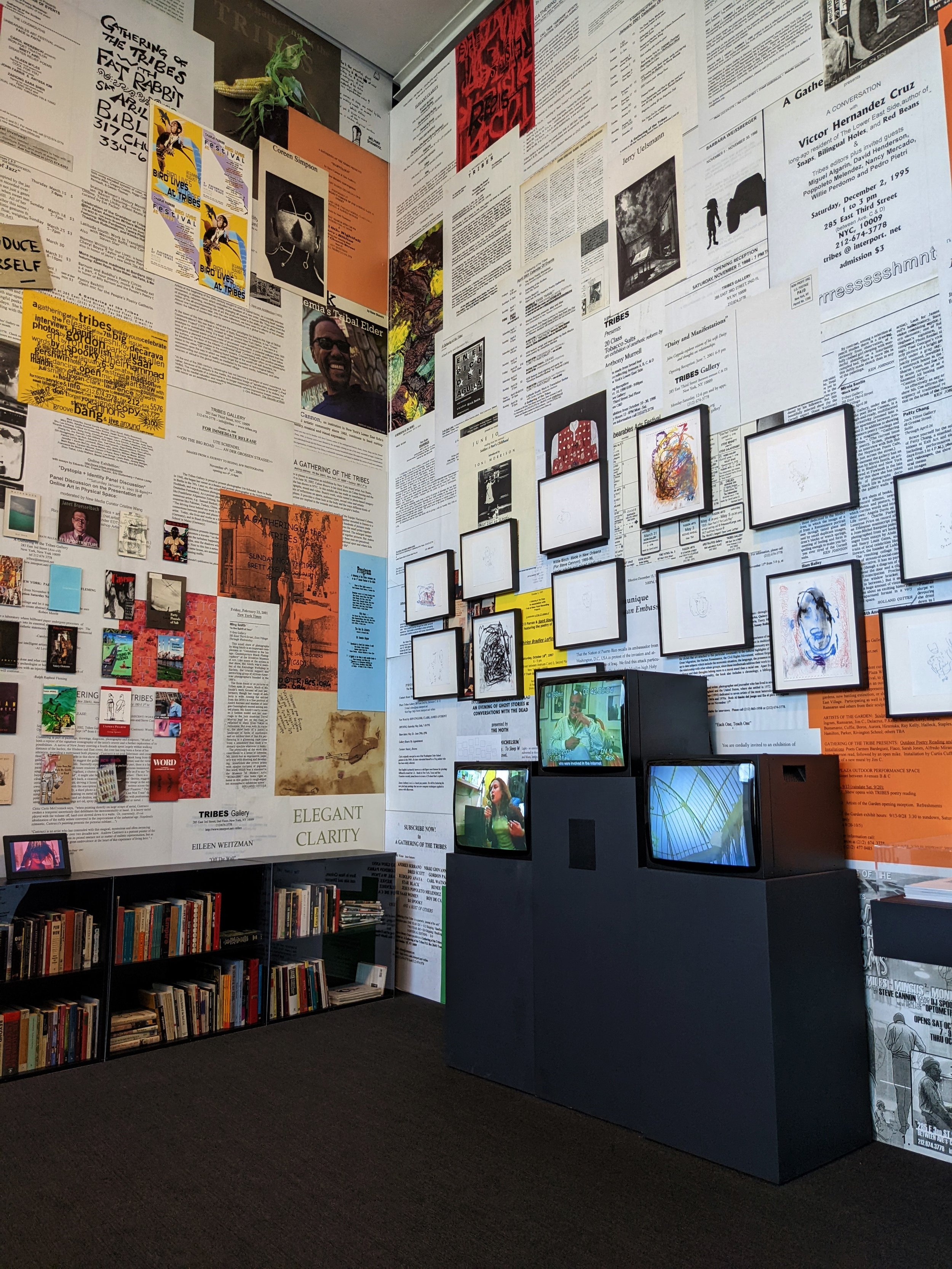
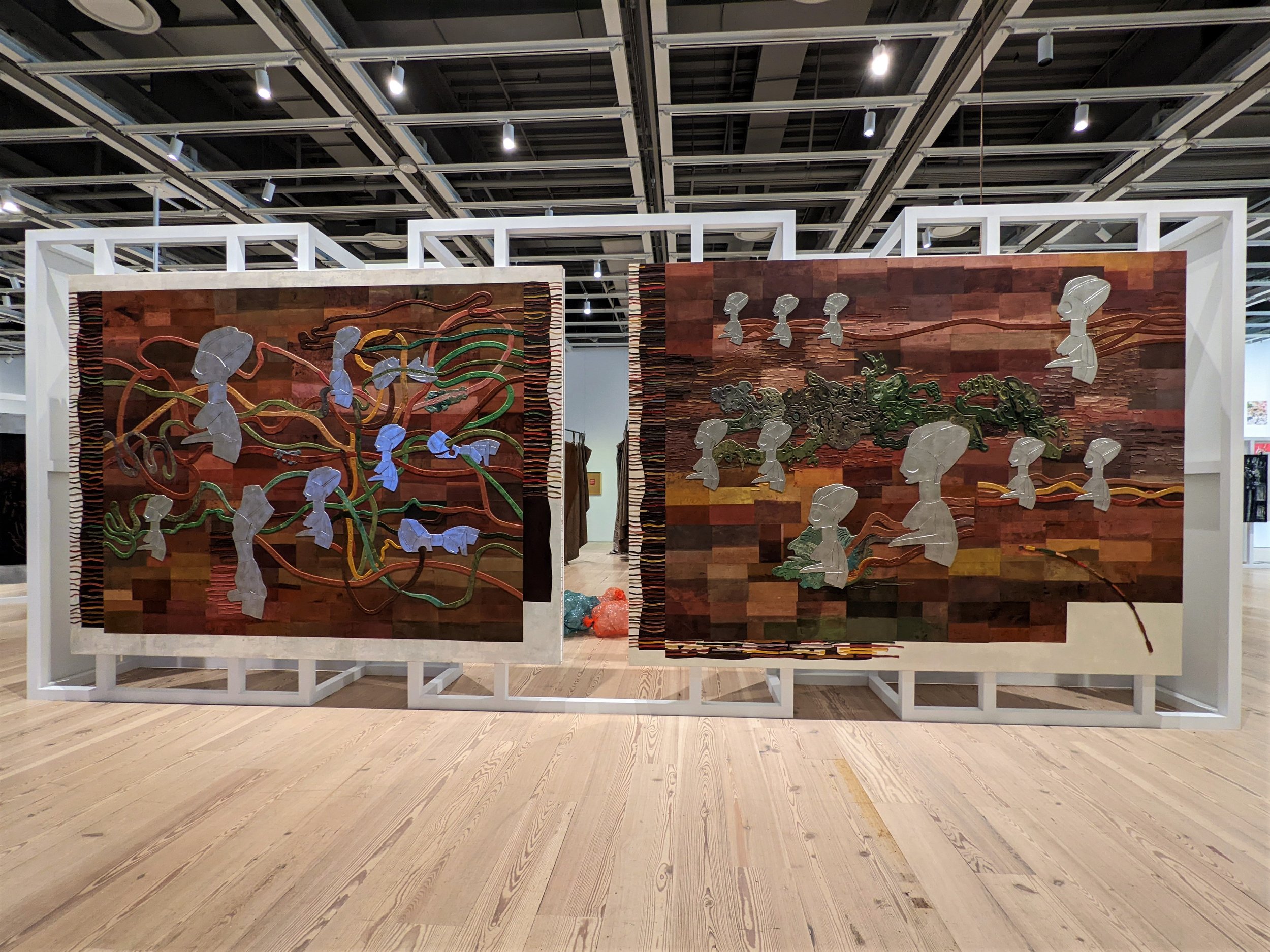
Every two years, the Whitney Museum holds an exhibition that is regarded as one of the most important and influential events in contemporary art. Some version of this exhibition, the Whitney Biennial, has been in existence since 1932, making it the longest-running survey of American art. Delayed for a year due to the COVID-19 pandemic, this year’s biennial is a “startlingly coherent and bold” forum for artists’ musings on the events, changes, and trials of last three years. There is a wide variety of perspectives and mediums, from more traditional painting, sculpture, and photography to experimentations with performance, video, light, chemicals, makeup and prosthetics, textiles, and technology. The artworks tackle a wide range of themes, including racial justice, class discrepancy, capitalism, corporatism, imperialism and the effects of colonialist action, the American prison system, indigenous issues, and the widespread grief of a global pandemic. An exhibition this far-reaching and ambitious could easily feel disjointed and chaotic, but instead it encourages the viewer to understand that the issues and conditions addressed by the art “are not new, their overlap, their intensity, and their sheer ubiquity created a context in which past, present, and future folded into one another.” The curators “organized this Biennial to reflect these precarious and improvised times.”
Yayoi Kusama’s Infinity Mirrored Rooms
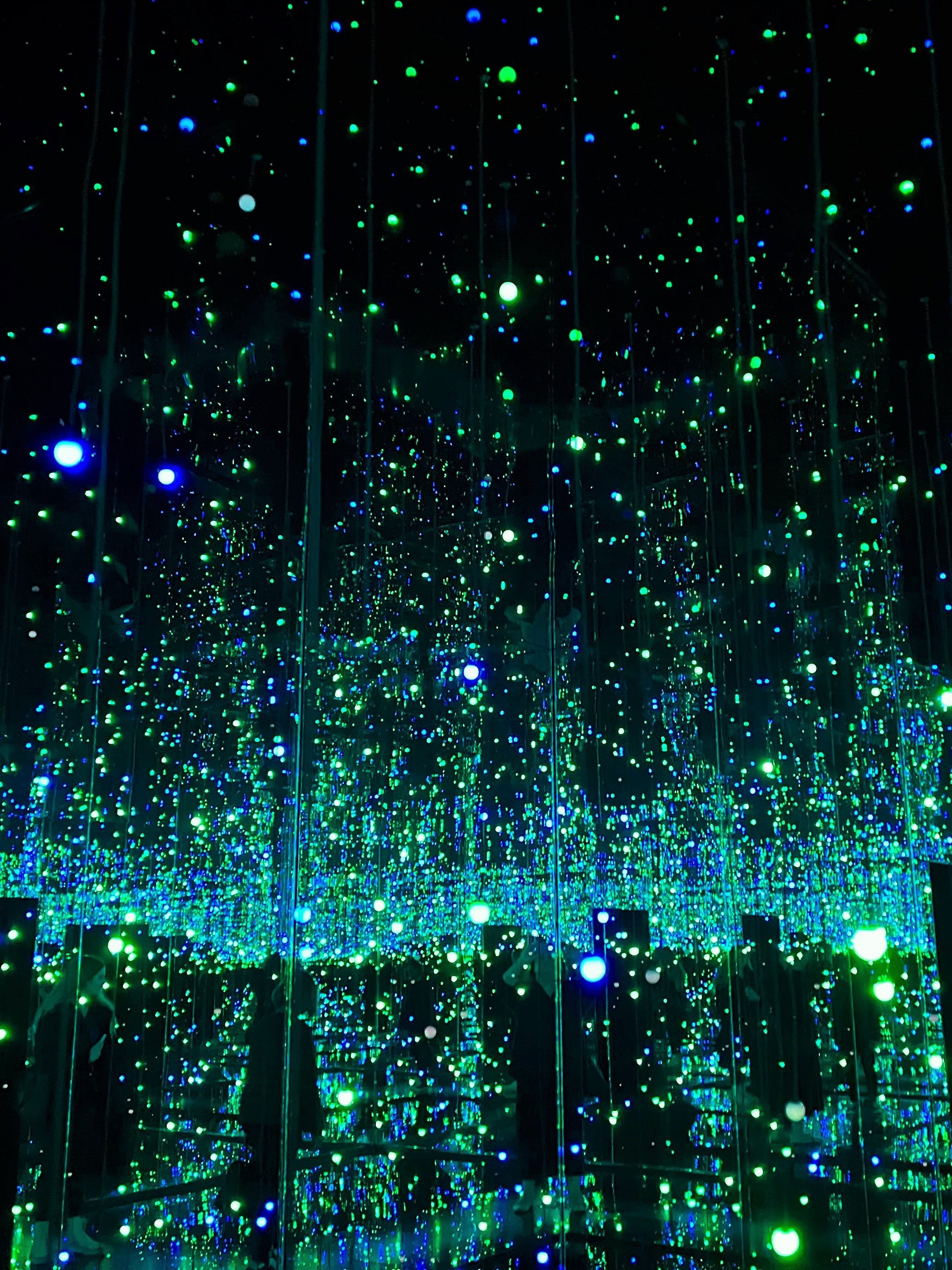

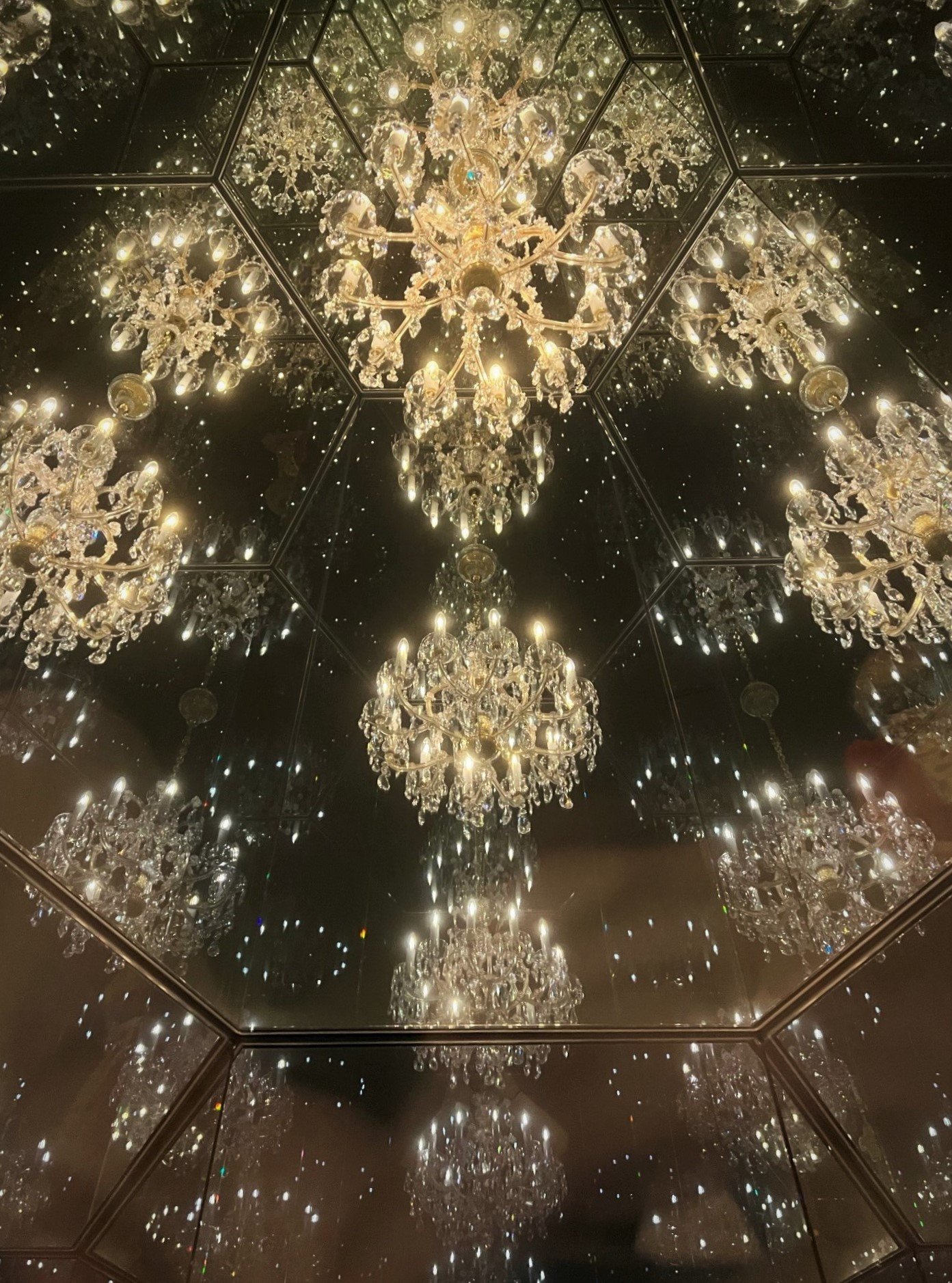
Yayoi Kusama is one of the most well-known contemporary artists in the world. She is best known for her conceptual and sculpture and installations, which blend elements of surrealism, pop art, abstract expressionism, and minimalism. Two of her Infinity Mirrored Room installations are currently on view at the Tate Modern in London. Both rooms strategically use lights and mirrors to create the illusion of infinite space. Infinity Mirrored Room – Filled with the Brilliance of Life is the artist’s largest mirrored room. Pinpricks of colored light shift rhythmically between hues, reflected off the mirrored walls, floors, and ceiling, as well as the still water filling pools on the floor. The effect is dizzying and beautiful. The other room, titled Chandelier of Grief, consists of a flickering baroque-style chandelier inside a smaller, hexagonal mirrored room. This meditative installation is meant to provoke thoughtful exploration of the viewer’s place in their environment. The current exhibition has been exceedingly popular, and it is easy to see why. These mesmerizing rooms are unique and transportive.
Adorn Me
Tanda Francis, a Brooklyn-based artist who incorporates Victorian and colonial ornamentation into her work, is known for focusing on monumental African female heads and masks and ancient customs and rituals. Adorn Me, an impressive sculpture in Fort Greene Park, is inspired by African sculptural tradition, including Ife portraiture, and is meant to address the under-representation of positive images of and by people of African descent in public artworks and also “provide a healing message during a time of heated debate over monuments erected as symbols of oppression and control.” The sculpture will be in Fort Greene Park through August 17, 2019.
Wake
Wake by artist Mel Chin rises up from the plaza in Times Square "like the beached remains of a massive beast." The boat-like sculpture is modeled on the USS Nightingale, a 19th-century expedition and merchant clipper ship that transported coal, cotton, munitions, and tea, and was also used as a slaving vessel before being commandeered by the US Navy during the American Civil War. According to Chin, the USS Nightingale "crystallizes the ways in which the expanding economies of the past are prologue to our current societal and environmental dilemmas." The figurehead is of famous 19th century opera star Jenny Lind, known as the “Swedish Nightingale," whose likeness was featured on many ship prows in the New York harbor, including the USS Nightingale. Through the sculpture, Mel Chin opens "a physical and virtual gateway to the future of human existence, inviting participants to contemplate their place within the world’s transforming climate."
Narcissus Garden in Rockaway
MoMA PS1 presents Yayoi Kusama’s site-specific installation of Narcissus Garden as part of Rockaway!, a free public art festival in Fort Tilden in Rockaway, Queens. Consisting of 1,500 mirrored stainless steel spheres, Narcissus Garden is on display in a former train garage that dates back to when Fort Tilden was an active US military base. The mirrored metal surfaces reflect the viewers (do you see Joseph?) as well as the industrial and decaying surroundings of the abandoned building. First unofficially presented in 1966 at the 33rd Venice Biennale, Narcissus Garden was installed on the lawn in front of the Italian Pavilion where Kusama stood among the mirrored balls. She tossed the spheres in the air and offered to sell them to visitors for 1,200 lire (approximately $2) in an act of self-promotion as well as a critique of overly commercial contemporary art. This exhibition is free and open to the public Friday through Sunday, 12pm to 6pm, through Labor Day, September 3.




